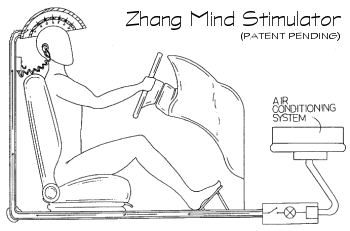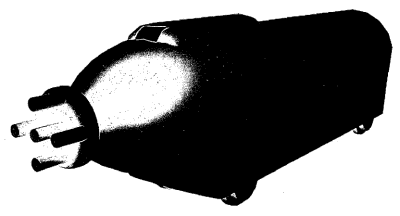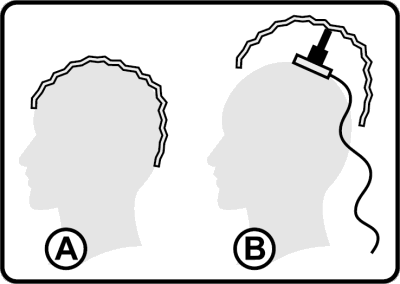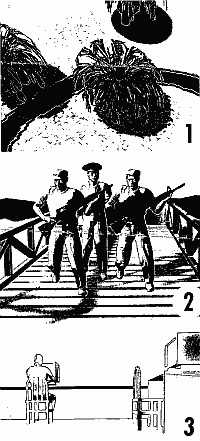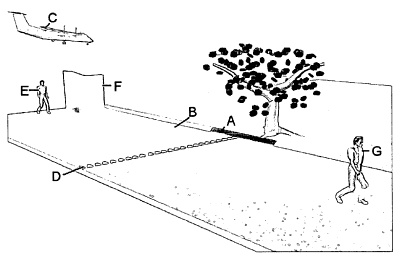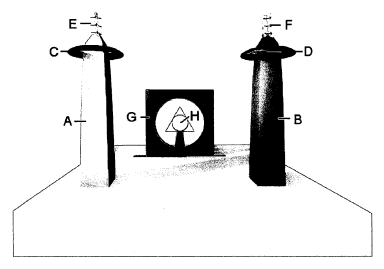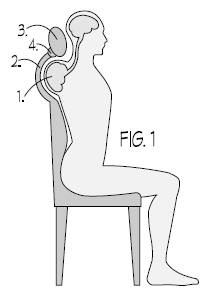He's a hyperinventing hypermachine! Hot on the heals of his Triangular and Photon spacecraft, John Q. St. Clair brings us yet another new propulsion design: The Magnetic Monopole Spacecraft, which is...
a spacecraft propulsion system that generates a field of wormholes which are threaded with a magnetic field. Acting as two attracting magnets, the spacecraft's north magnetic field is attracted to the constantly regenerating south magnetic monopoles of the wormholes which provides lift on the hull.
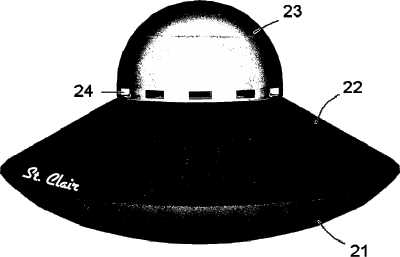
FIG. 11.
Of particular interest here at ZPi, check out these key system components:
... a lower hull made of aluminum sheet having a shallow spherical profile [21]; a circular flat sloping hull made of aluminum sheet attached to the top of the lower hull on the periphery [22]; ... a hemispherical cupola in the shape of a dome made of aluminum sheet [23] ...
The thing's a flying AFDB with built in basal protection! This could be the ideal vehicle for paranoid space exploration.
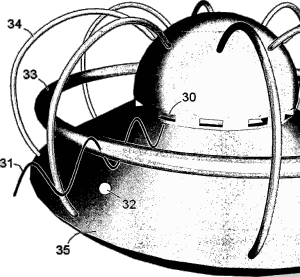
But more on the fascinating method by which the MMS works...
[24] in FIG. 11 is "an electrically-insulated plastic-molded tubular cylindrical hull containing slots for mounting an array of radial microwave waveguides", which are needed to produce a radial electromagnetic field of microwave beams [30 in FIG. 15, right] which interact with the circular magnetic field [33] produced by the oscillating magnetic flux density field [34] to generate negative energy [32] that in turn generates the field of wormholes between space and hyperspace over the hull [35] that cause the lift.
Simple, really.
With every patent application, St. Clair gradually reveals to mankind more of his insight into hyper-reality. This time we learn why his home of Puerto Rico is ideally situated on Earth to conduct hyperspace research:
[T]he corners of a tetrahedron circumscribed by a sphere touch the sphere at an angle of -19.47°. Looking at the planets of the solar system, the Giant Red Spot vortex of Jupiter, which can hold two planets the size of Earth, is located at this angle. On Mars, the Olympic Mons volcano, which is the size of France, is located at north 19.5°. Here in the Caribbean there is a slow moving rock mantle vortex at north 19.5° that curves the islands down toward Venezuela. So the geometry of space is related to the tetrahedron. What this suggests is that there is a subspace manifold whose tetrahedral geometry projects all the constants of physics into our dimension.
[Numerous technical diagrams and mathematical formulas about said subspace manifold...]
While this is the mathematical explanation as to why there are hyperspace co-dimensions, I can attest personally to the fact, as described in my patent application Full Body Teleportation, that I was teleported through hyperspace and returned to our dimension over a distance of 100 meters.
Jupiter, Mars, and roads next to airports in Puerto Rico aren't the only places where unusual phenomena are associated near 19.47° latitude (and need I point out that Puerto Rico is the southern point of the Bermuda Triangle or that the Roswell incident happened in 1947?); see Planetary Anomalies for a list of others in our solar system. Also see Hyperdimensional Physics for more on the hypertrigonometry behind this and the Cydonia complex.
Alternate application copy: US2006168937

